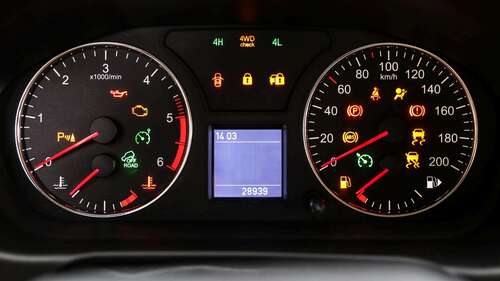
If you see an old-fashioned-looking thermometer icon making its presence known on the dashboard, the car is letting the driver in on the fact that the temperature has ventured beyond the normal limits. The engine temperature warning light is certainly a provoke for concern when it illuminates, especially considering what could happen if the problem persists.
The vital warning indicator monitors the temperature of the engine’s coolant, and when things start to overheat, it is meant to give the vehicle’s owner plenty of time to evaluate the situation. The causes for a visit from the red alert could stem from a coolant leak, excessive use on a hot day, hose cracks, or a water pump malfunction. Before taking a look, the safest practice would be to turn off the engine and let the car cool down a bit to hinder getting burned.
After checking for any potential issues and adding any necessary additional antifreeze, if the signal remains ignited or continues to appear, it is important to have the vehicle checked out by a mechanic or service station. An overheated engine can not only provoke severe damage but is also a fire hazard, meaning people should never sleep on the engine temperature warning light.
On the other hand, when the indicator light is blue, it signifies that the engine hasn’t warmed up sufficiently to perform at its best on the road, probably weather-related, appreciate thanks to a cold winter morning. Therefore, it’s probably wise to foresee until things warm up to ensure the blue thermometer goes out before taking one’s ride for a spin.

